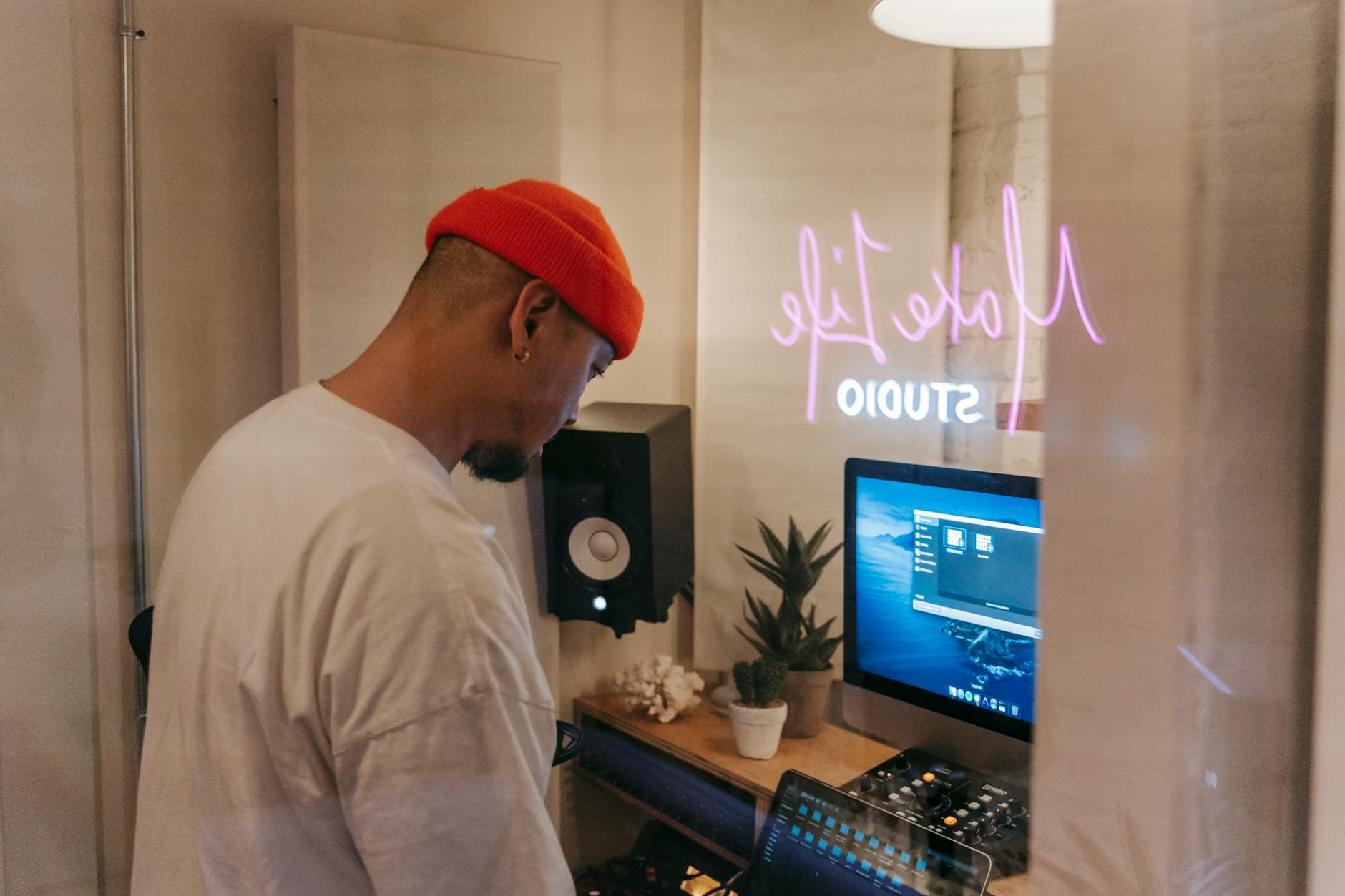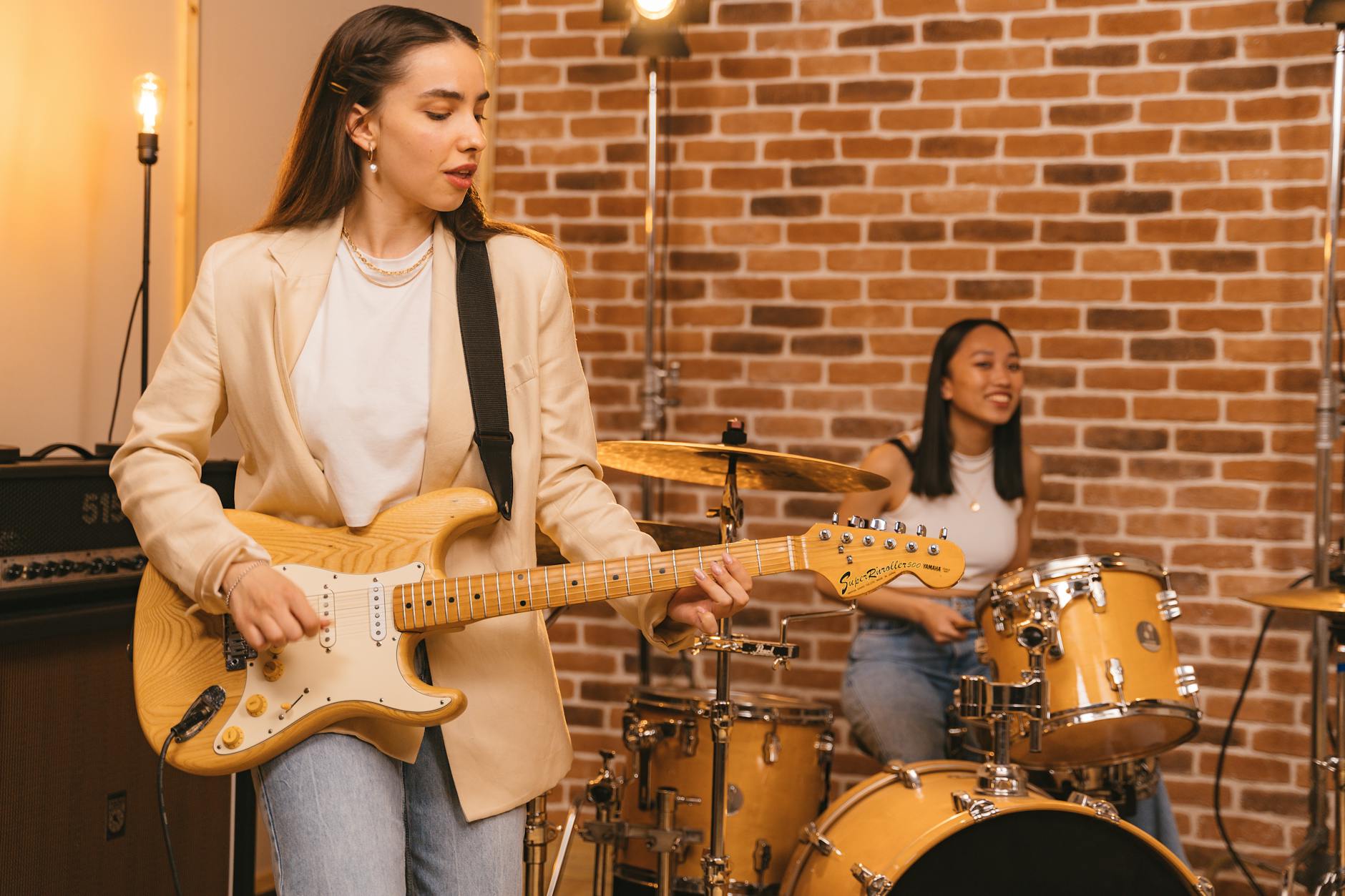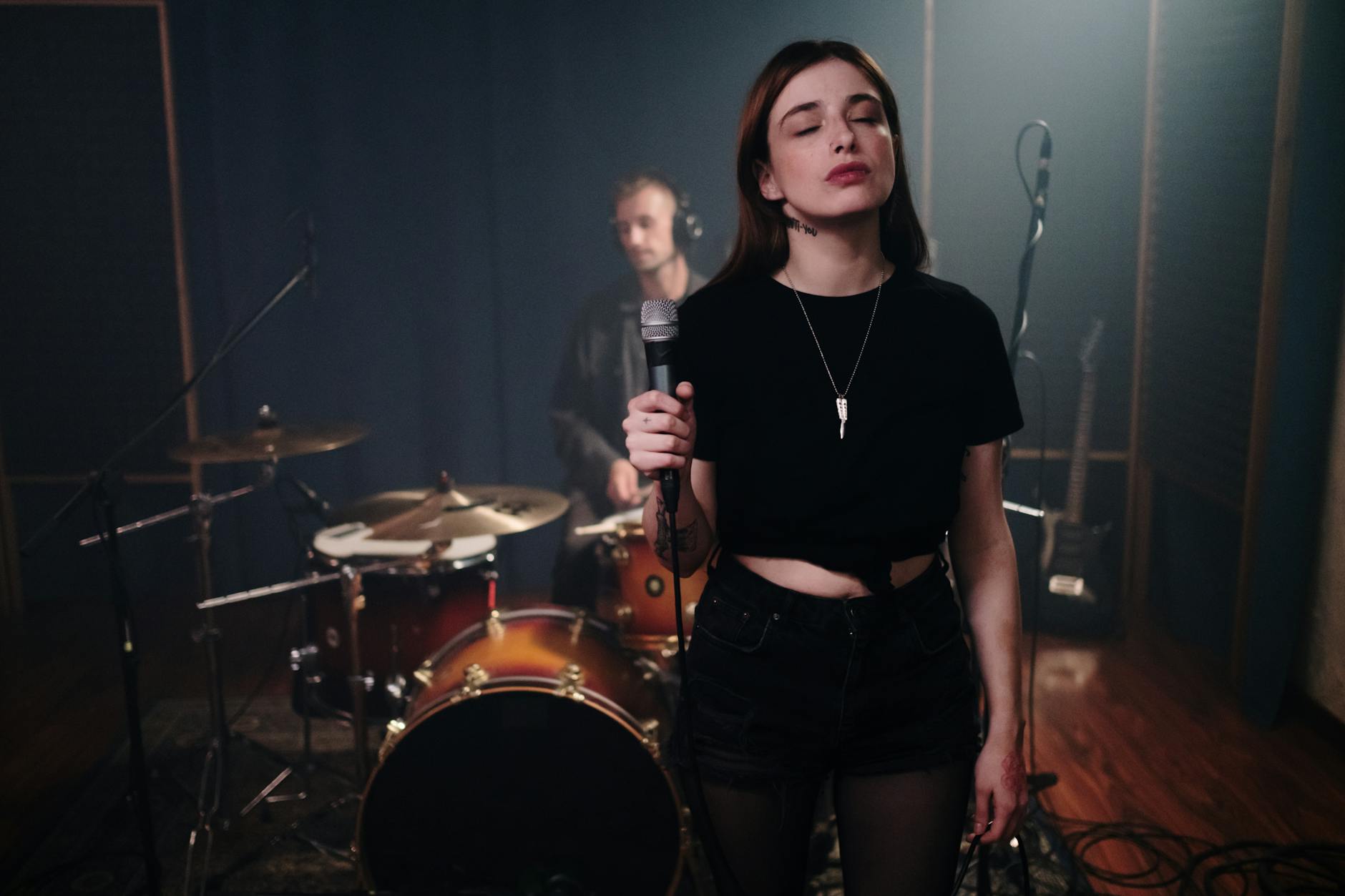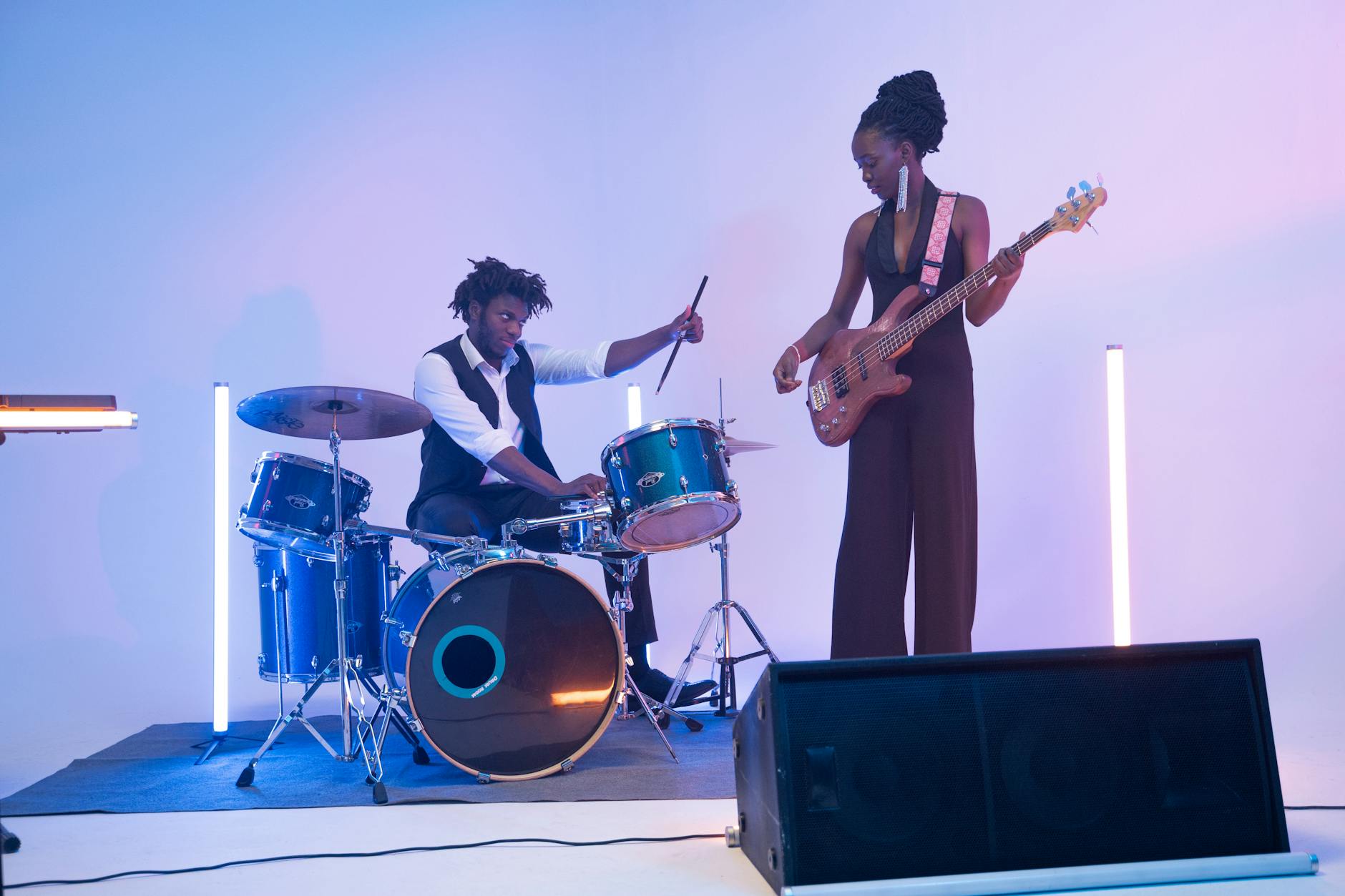Best Free DAWs for Guitarists in 2025 with Setup & Workflow Tips
Discover the best free DAWs for guitarists 2025. Compare features, get workflow tips, and find the perfect guitar-friendly DAW. Start recording better now!

Looking to record, practice, or shape pro guitar tracks on a tight budget? Turns out, the right free DAW in 2025 can seriously boost your workflow—if you pick one with guitarists in mind. Most roundups list a dozen DAWs but skip what players actually need: amp sims, quick re-amping, easy guitar tracking. Here’s the truth—guitarists face unique challenges, and half the DAWs out there just don’t cut it when it’s time to dial in tone or edit riffs. The good news? This guide doesn’t just list names. It breaks down the best free DAWs for guitarists in 2025, compares their guitar-specific features, and hands over practical setup and workflow tips that actually work. No more guessing—just plug in, record, and sound great, whether you’re on Windows, Mac, or even Linux.
What You'll Learn:
- Breakdown of top free DAWs for guitar recording in 2025 on any platform.
- Real amp sims, effect chains, and re-amping features compared for guitarists.
- Setup guides: from interface to monitoring, for punchy, low-latency tracks.
- Workflow tips for managing CPU, fixing latency, and creative editing.
- Platform-specific picks: Mac, Windows, cross-platform, and advanced workflows.
- Answers to guitarist FAQ: best DAWs, amp sim setup, and home studio troubleshooting.
GarageBand: Best Free DAW for Mac Guitarists
GarageBand remains the first stop for Mac-based guitarists. It's not just the price—it's the built-in guitar amps, pedalboards, and dead-simple interface that make home recording feel less like homework. Users can pull up classic British stack tones, Fender clean sounds, or a range of effect chains, all inside the DAW—no extra downloads needed.
Guitar Workflow in GarageBand
Plug a guitar straight into the audio interface and open a new track—select "Guitar" as input. From there, dial up amp sims or stack pedals with a few clicks. Want crunch for verses and sparkling clean for choruses? Save multiple presets and automate switching parts for a pro touch. Recording direct-in (DI) style gives room for post-processing, and the pedalboard lets you drag and drop everything from classic delays to full fuzz walls.
- Choose amp model: Twin Reverb for cleans, Plexi for punchy rock, etc.
- Stack up to 15 virtual pedals per chain
- Record DI for re-amping later in Logic Pro if upgrading
- Simple automation for changes mid-song
Best For
Beginner and intermediate Mac users who want no-fuss, high-quality results and a seamless path to Logic Pro for more advanced production. As Guitar World recommends, the transition from GarageBand to Logic is painless, making it a great starting point for home recording. TechRadar also highlights its built-in amp modeling and pedalboard for realistic tones out of the box.
Downsides? GarageBand is Mac-only, and advanced routing is limited. Still, for most guitarists aiming to play, record, and mix, it's the easiest way in.
Cakewalk by BandLab: Pro-Level Free DAW for Windows Guitarists
Cakewalk by BandLab gives Windows guitarists a professional-grade DAW with unlimited tracks, VST effects, and deep routing—all at no cost. The workflow leans more "pro studio" than GarageBand, and setup does take a little patience at first. But for guitarists who want flexibility, amp sim support, and expandability, it rarely leaves you wanting.
Setting Up Guitar Tracks in Cakewalk
Here's a quick way to get started:
- Plug your guitar DI into an audio interface (think Focusrite Scarlett or PreSonus AudioBox for clean, low-latency signals).
- Install Cakewalk via BandLab Assistant and validate the free license.
- Create a new audio track using the "BASIC" template.
- Assign the correct input/output channels (interface IN for guitar).
- Arm the track and enable input echo for live monitoring.
- Hit record—now you have a clean DI on the timeline.
Use Cakewalk's bundled TH3 (now THU) amp sim on the track for instant amp flavors, or load VSTs like AmpliTube. Routing is deep—automate effect parameters, stack multiple plugins, and bounce (pre-render) tracks to free up CPU as projects grow. For re-amping, copy the dry DI, apply new amp settings, and blend different tones.
Best For
Intermediate to advanced Windows players who want advanced mixing, re-amping, or creative signal chains. MusicRadar calls Cakewalk's feature set professional-level and flexible—perfect for guitarists building more complex sessions.
Limitations: Windows-only and the workflow may intimidate absolute beginners. But with a few videos or tutorials, most guitarists are tracking and mixing like the pros.
Tracktion Waveform Free: Most Flexible Free DAW for Guitarists
Waveform Free covers a lot of ground for guitarists—Windows, Mac, or Linux, all with unlimited tracks and a layout that favors experimentation. There's a steeper learning curve, sure, but the reward is absolute freedom to create complex chains and custom workflows. Waveform Free shines when you want to do things your own way and push boundaries.
Optimizing Waveform for Guitar Recording
Guitar tracks start with a simple add—just create a new audio track and set the input to your interface. From there, any VST or AU amp sim (think AmpliTube or Neural DSP) loads up easily. The "Rack" system lets you chain effects, automate pedals, and route signals any way you want. Track freezing is a real lifesaver, too—process heavy amp sims, then freeze the track to save CPU for more creative edits or layer more guitars.
- Cross-platform: Windows, Mac, Linux (even Raspberry Pi!)
- Unlimited audio/MIDI tracks—great for big arrangements
- Third-party VST/AU support for advanced amp sims
- Modern, clean interface—customizable layout
For users new to Waveform, the depth can be overwhelming. But for guitarists who like to dive in—crafting intricate pedal chains or trying out new signal flows—it's pretty hard to beat. Emmaline Music notes the customization and unlimited tracks give advanced users total control, while MusicRadar highlights Waveform’s flexibility for creative workflows.
Ableton Live Lite: Best for Songwriting and Loop-Based Guitarists
Ableton Live Lite brings a different vibe to guitar recording. It's all about loops, layers, and creative songwriting. Guitarists who thrive on capturing quick riffs or building tracks from repeated sections find the clip-based workflow a game changer. Since Live Lite comes bundled with lots of audio interfaces and gear, many players already have access for free.
Ableton Live Lite Guitar Workflow
Start by creating a new audio track for the guitar. DI recording is the norm—plug into an interface, arm the track, and use Live’s monitoring to stay in the groove. Add VST amp sims or built-in effects for real-time feedback. Want to swap clean verses with overdriven choruses? Copy and drag clips into new scenes or automate the amp sim's gain between sections. Live’s automation system makes dialling in creative changes a breeze, from wah sweeps to delay throws.
- Clip-launching for instant riff and idea capture
- Easy drum/guitar looping—great for songwriting and jamming
- Supports VST/AU amp sims and realtime effects
- Automation brings movement and life to static parts
Downside: the track and plugin count is limited in the Lite version. Still, for riff-centric creators and those focused on arrangement, Ableton delivers non-stop inspiration. As Guitar World highlights, its performance-friendly workflow and real-time automation helps guitarists move from idea to full arrangement without losing momentum.
Reaper (Free Evaluation): Advanced Features for Serious Guitarists
Reaper isn't technically free forever, but the unlimited evaluation offers all core features at no cost, making it a secret weapon for guitarists willing to spend time learning. It supports every plugin type, allows infinite routing flexibility, and runs light even on older hardware. There's a reason advanced players embrace it.
Guitar Recording and Editing in Reaper
Set up is straightforward—create an audio track, select the guitar input, and hit record for clean DI. Add amp sims like AmpliTube, S-Gear, or any favorite VST for tone shaping. Need layers? Duplicate tracks for rhythm and lead, then re-amp or experiment with different amp chains on each. Editing is powerful—slice up takes, re-amp sections, and use automation for detailed edits. Track freezing and bouncing help manage CPU, letting you stack more plugins without lag.
- Unlimited evaluation, full-featured—ideal for deep, custom workflows
- Low CPU usage and rock-solid stability
- Supports all plugin standards—VST, AU, AAX, etc.
- Tons of community scripts and workflow mods
But Reaper isn’t for everyone. There's a learning curve, and the interface can look overwhelming at first. Yet for serious guitarists who want ultimate control, advanced editing, and consistent results, it's the DAW they'd reach for. MusicRadar and TechRadar both call out Reaper’s customization and power for ambitious users. Remember, it’s an unlimited trial, so if it clicks, consider buying a license to support the developers.
Honorable Mentions: Other Free DAWs for Guitarists
Not every free DAW goes all-in for guitarists, but a few deserve a look—especially for specific needs.
- Audacity: Perfect for simple editing and sound cleanup. No real-time amp sims or complex routing, but speedy for cutting demos or podcast edits.
- LMMS: Geared toward MIDI-based production rather than guitar audio, but handy for programming drums or synth layers.
- SoundBridge / Ohm Studio: Both offer basic multi-track features, with Ohm Studio adding real-time cloud collaboration. Limited amp sim options—more suited for guitarists needing basic tracking plus group projects.
For those after the best guitar tone and routing, DAWs above are better picks, but these tools fill gaps for editing, MIDI, or teamwork.
How to Set Up Your Free DAW for Guitar: Step-by-Step Guide
A killer DAW won't do much if the setup is off. Here’s a dependable process for getting guitar into your computer, every time:
Step 1: Connect Your Guitar and Interface
Plug straight into a quality USB audio interface (think Focusrite Scarlett or PreSonus AudioBox). Avoid headphone-outs on amps—they can cause hiss, latency, or worse. Make sure drivers are installed (ASIO on Windows is a must).
Step 2: Configure DAW Audio Settings
In your DAW, select the audio interface for both input and output. Set the buffer size low (64-128 samples) for minimal latency, but raise it if you get pops or glitches during big sessions.
Step 3: Create Guitar Track and Add Amp Sim
Add a new audio track, select the guitar input. Drag in your amp sim or pedal plugin—AmpliTube, TH3, or built-in. Check input levels (aim for peaks at -6dB to avoid clipping) and record clean DI for full flexibility. Don't commit amp tone on the way in.
Step 4: Record and Monitor
Enable input monitoring so you can play along with effects live. Record your part, then tweak amp settings or re-amp later. This keeps tone options open and allows more editing down the line.
- Always record clean DI—easier to re-amp or fix later
- If latency is high, check buffer size and interface drivers
- Use direct monitoring on the interface if possible
This approach works in every DAW above, maximizing tone and editing freedom for any style.
Guitarist Workflow Tips and Troubleshooting in Free DAWs
Guitarists end up troubleshooting more than most. But a few simple workflow tricks make a huge difference—and can mean the difference between endless headaches and smooth, creative sessions.
Workflow Hacks for Guitarists
- Use automation for dynamic tones—ride amp sim gain/FX levels for each song part.
- Track freezing is gold—after printing effects, freeze heavy amp sim tracks to save CPU.
- Bounce (render) finished guitar sections—lets you reverse, chop, or layer creatively without taxing your computer.
- Copy clean DIs and experiment with wild re-amping chains—blend results for big, pro sounds.
Troubleshooting Common Problems
- Latency: Lower your buffer size, use ASIO/Core Audio drivers, and minimize background apps.
- Clipping: Set input gains so peaks sit around -6dB, and always check your levels before final take.
- Plugin crashes: Check versions—sometimes beta plugins cause havoc. Switch to a lighter amp sim or freeze tracks if the CPU maxes out.
And don't forget: save templates for your favorite amp sim and pedal combos to skip setup time next session.
Conclusion
Each free DAW for guitarists in 2025 brings something unique—GarageBand for smooth Mac workflows, Cakewalk for pro Windows production, Waveform Free for custom builds, Ableton Live Lite for songwriting, and Reaper for advanced editing. There’s no single winner—match the tool to your needs and get tracking. Experiment with setup techniques, automation, and DI recording for flexibility. The right DAW opens the door to creative, frustration-free home recording—without breaking the bank.
Frequently Asked Questions
Which free DAW is best for guitar recording?
The best free DAWs for guitar recording in 2025 are GarageBand (for Mac users), Cakewalk by BandLab (for Windows), Tracktion Waveform Free (cross-platform), Ableton Live Lite (songwriting), and Reaper (advanced workflows, free evaluation). Each offers built-in or plugin amp sims, flexible routing, and guitar-tailored workflows. Choose based on your platform and preferred workflow style.
How do you set up a DAW for guitar practice?
Setup is easy: connect your guitar to an audio interface, select the interface as input in your DAW, add a new audio track, and load an amp sim or pedal plugin. Adjust input levels (aim for peaks at -6dB), use low buffer settings (64-128 samples), and enable monitoring for real-time play. Always record clean DI to tweak tones later.
Can you use amp sims in free DAWs?
Yes, almost every top free DAW supports amp sims—either built-in (GarageBand, Cakewalk) or as VST/AU plugins (Waveform Free, Ableton Live Lite, Reaper). Install your preferred amp sim and load it onto your guitar track. This gives authentic tones without expensive hardware amps or pedals.
What are common problems when recording guitar in a free DAW?
Common issues include latency (fixed by lowering buffer size and using the right drivers), clipping or weak signals (set input gains around -6dB), and CPU overload (freeze or bounce tracks with heavy amp sims). Using a proper audio interface and up-to-date plugins reduces crashes and issues.
Is GarageBand or Cakewalk better for guitarists in 2025?
GarageBand is best for Mac users who want easy workflows and built-in guitar amps; Cakewalk by BandLab offers pro mixing features and third-party amp sim support for Windows users. Both excel, but platform is the deciding factor. Advanced users may prefer Cakewalk’s deeper routing, while beginners may find GarageBand more accessible.
Key Takeaways
- Free DAWs in 2025 can fully cover a guitarist’s needs—amp sims, layering, and pro workflows without costly licenses.
- Platform matters: pick GarageBand for Mac, Cakewalk for Windows, Waveform Free or Reaper to go cross-platform.
- Record clean DI tracks and add amp sims during mixing for ultimate flexibility.
- Troubleshoot latency and CPU issues with buffer settings, track freezing, and proper driver setup.
Related Topics
Explore more articles in these topics to deepen your knowledge.
Related Articles

How to Record Guitar and Songwrite Seamlessly in Ableton Live 12 for Guitarists
Learn how to record guitar in Ableton Live 12 with pro workflow tips. Master setup, songwriting, and amp sims—create music faster!

Fender Studio App for Mobile Multitrack Guitar Recording (2025): The Ultimate Free Solution for Guitarists
Discover how the Fender Studio app guitar recording 2025 brings easy multitrack studio power to your phone. Start recording pro guitar tracks now!

Fender Studio App 2025: Free Multitrack Guitar Recording on Mobile and Desktop
Master the Fender Studio guitar recording app—unlock free multitrack recording on mobile or desktop. Capture ideas fast. Start creating now!
Discover more insights from our blog to enhance your musical journey.
